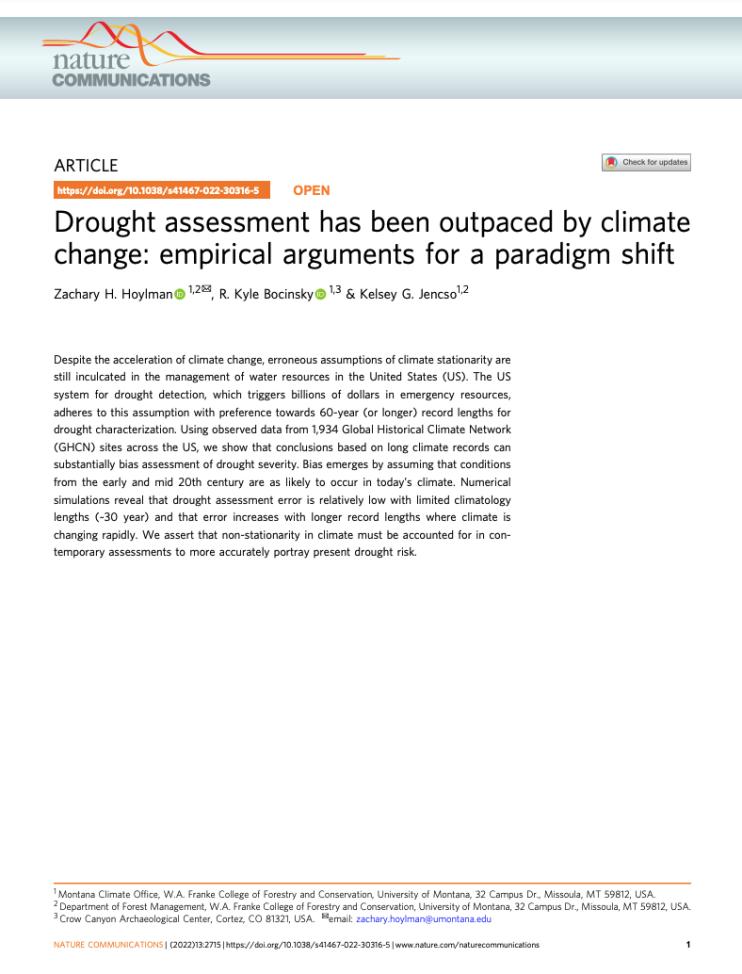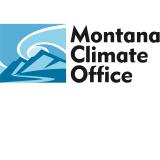Drought Assessment Has Been Outpaced by Climate Change: Empirical Arguments for a Paradigm Shift
Despite the acceleration of climate change, assumptions of a stationary climate are still incorporated into the management of water resources in the U.S., with a preference towards 60-year (or longer) observation record lengths for drought characterization. Bias emerges by assuming that conditions from the early and mid-20th century are as likely to occur in today’s climate.
This study, led by researchers from the Montana Climate Office and published in Nature Communications, evaluated the degree to which assumptions of a climate stationarity may bias drought assessment. The study reveals that drought assessment error is relatively low with short climatology lengths, and error (with respect to the more recent climate) can increase substantially when using longer reference frames where climate is changing rapidly. This increase in error results in patterns of drought metric bias. “Hot spots” of dry bias—i.e., where the long climatology suggests conditions are drier than the shorter, 30-year climatology—were strongly apparent in the southeastern and southwestern US, especially during periods of meteorological drought. Contrary to this result, some locations (such as the Pacific Northwest) are trending wetter, and exhibit a strong wet bias during dry times.
This study is the result of NIDIS-funded research: Enhancing Drought Monitoring and Early Warning in the Upper Missouri River Basin.




